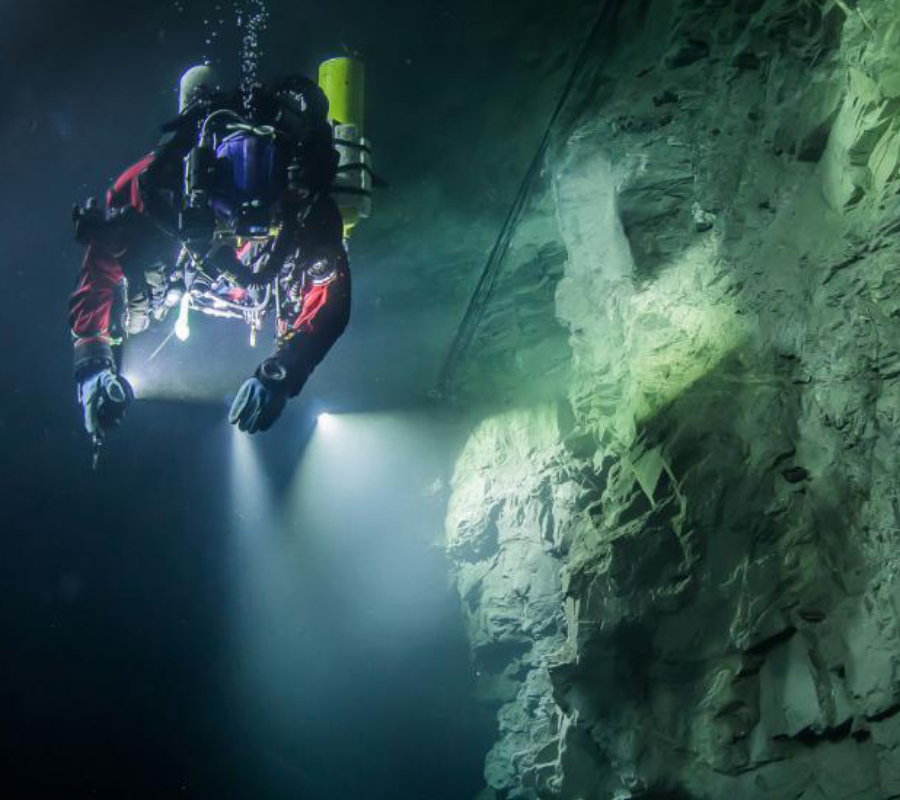The Hranická Propast is now the deepest underwater cave in the world with 1.325 feet deep (404 meters). A Czech-Polish team said Friday their measures have beaten the now second deepest cave in the world Pozzo del Merro, which is located in Italy.
The cave was first studied in 1963. On Tuesday, the Czech-Polish team could finally reveal the exact depth of the Hranická Propast. The end of the cave was not accessible for humans and the team had to use a robot to determine how deep it was. Polish diver Krysztof Starnawski explored the cave for the first time in 1999, while Miroslav Lukas of the Czech Speleological Society visited the Hranická Propast for the first time in 1974.

Starnawski had the feeling the cave was deeper that it seemed because of its limestone formation. Limestone is a sedimentary rock composed mainly of marine organisms. The Polish diver led several expeditions to prove the cave’s real depth with the support of National Geographic, which included several dives started in 2014.
To measure the cave’s dimensions, the team used a remote operated underwater vehicle (ROV) to get to where men could not get and calculate the exact measure of the cave.
Several attempts were needed to reach the bottom of the Hranická Propast
In 1995, a robot managed to reach 205 meters in the abyss, which set the deepest point of the cave to that time. But in 2014, Starnawski discovered while diving that there was a narrow opening at 656 feet (200 meters) and “a large break” that allowed him to reach a depth of 1,260 feet 384 meters. The opening was a vertical tunnel and was almost as deep as Pozzo del Merro, which measures 1,286 feet (392 meters.)
When the team came back to the Hranická Propast cave in 2015, Starnawski found that the narrow path he discovered in 2014 had widened. He dived through the vertical path and reached a depth of 869 feet (265 meters). Then, the Polish men used another probe and hit what they believed was the bottom of the passage at 1,214 feet (370 meters.)
On Tuesday, explorers truly got to the lowest part of the cave. The researchers had to use ROV technology to get to the bottom of the cave because humans cannot scuba dive beyond 400 meters deep.
Once the robot got to the bottom of the cave, it found fallen trees, logs, and branches. The discovery suggests that the cave has changed over the years, said Marcin Jamkowski, a member of the expedition team and adventure filmmaker.
It appears that the structure follows a rock feature or a fault line that was carved by hot water going from the underground spring, according to Jankowski.
Source: Live Science
